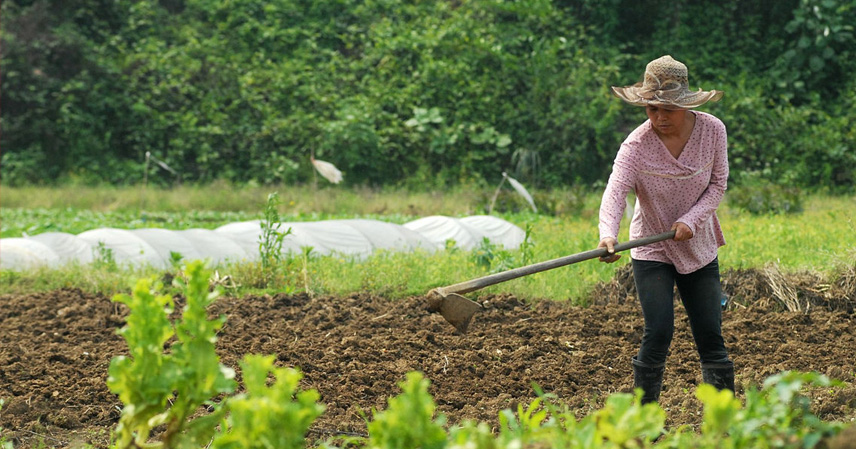In many American and European suburbs, sprawling villas come with impeccably manicured lawns that stretch out like green carpets—yet these same homeowners rarely convert that prime space into vegetable gardens. Why don’t they grow their own vegetables? The answer lies in a mix of dietary preferences, convenient access to fresh produce, land use traditions, practical challenges, and deep-rooted cultural norms that prioritize leisure over self-sufficiency in gardening.
Dietary Differences: Vegetables as Sides, Not Staples
One key reason Americans and Europeans don’t prioritize growing vegetables stems from stark contrasts in eating habits compared to Asian cultures, particularly Chinese cuisine. Western diets heavily feature bread, meats, dairy, and processed foods as the foundation of meals. Breakfast often means toast slathered with butter alongside milk or coffee, while lunch and dinner revolve around sandwiches, burgers, steaks, or pasta dishes.
In these routines, vegetables play a supporting role—think a side salad with your burger or steamed broccoli alongside a roast—rather than dominating the plate like stir-fried greens or veggie-heavy soups in Chinese meals. This lower demand for homegrown vegetables means there’s little incentive to invest in personal plots for growing produce. Why bother tending a garden when veggies are just accents, not essentials?
Abundant Supermarket Supplies: Fresh Veggies Year-Round
Convenience plays a huge role in why Europeans and Americans skip home vegetable gardening. Grocery stores and supermarkets are stocked to the brim with a vast array of fresh, seasonal, and even exotic vegetables available 365 days a year. From crisp lettuces in winter to heirloom tomatoes in summer, shoppers can grab whatever they need without the hassle of planting, weeding, or harvesting.
This reliable supply chain—bolstered by global imports and advanced farming—makes buying produce far easier than growing vegetables yourself. For busy households, it’s a no-brainer: why dedicate yard space to a veggie patch when the corner store delivers freshness on demand?
Land Use and Lawn Traditions: Social Spaces Over Edible Plots
Beyond food habits, the iconic lawn in front of American and European homes serves purposes that go far beyond aesthetics. These tidy grass expanses aren’t just for show; they’re vital for social gatherings and outdoor fun. Picture weekend barbecues, frisbee tosses, or family picnics—flat, lush lawns make these activities possible and enjoyable.
Transforming that lawn into a vegetable garden would disrupt this communal vibe, turning a welcoming play area into a muddy, utilitarian space. It could also clash with neighborhood aesthetics, where uniformity is prized. Many suburban communities enforce strict rules on property appearances through homeowners’ associations (HOAs), banning large-scale vegetable growing to maintain curb appeal. Violating these could spark disputes or fines, deterring even the most enthusiastic would-be gardeners from starting a home vegetable plot.
Practical Hurdles: Time, Skills, and Effort in Growing Vegetables
Growing your own vegetables isn’t as simple as it sounds, which adds another layer of reluctance among Western homeowners. It demands knowledge—from seed selection and soil preparation to fertilizing, watering, and combating pests. For those without farming backgrounds, the learning curve feels steep, with risks of poor yields or total crop failure looming large.
Time is the biggest barrier. Maintaining a vegetable garden requires consistent effort: daily watering, weekly weeding, and seasonal pruning amid fast-paced work lives. With long commutes and demanding jobs, many Americans and Europeans simply lack the bandwidth for such hands-on tasks. Purchasing pre-washed, ready-to-eat veggies from the store? That’s the efficient choice that fits modern lifestyles.
Cultural Mindset: Specialization, Leisure, and the Farmer’s Role
At its core, the aversion to home vegetable gardening reflects broader Western values emphasizing professional specialization and work-life balance. In American and European societies, food production is seen as the domain of farmers, market gardeners, or commercial growers—not a DIY chore for suburbanites. This division of labor fosters a hands-off approach: why grow vegetables when experts handle it better?
Moreover, leisure time is sacred. Rather than toiling in the dirt, many prefer channeling energy into travel, sports, hobbies, or cultural pursuits. Home gardening, with its repetitive demands, feels like drudgery compared to these rewarding escapes. This cultural tilt toward enjoyment over self-reliance keeps lawns green and vegetable patches rare.
In essence, while the idea of growing your own vegetables appeals to sustainability enthusiasts, it clashes with the practical realities and preferences shaping Western suburban life. For now, those pristine lawns remain symbols of relaxation, not revolution in the garden.



